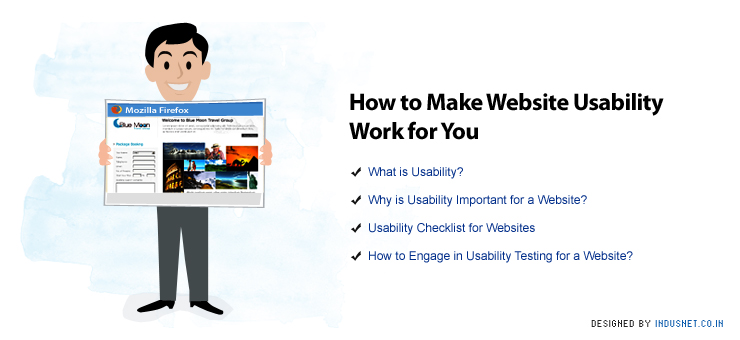
Before designers and developers begin to argue about how a website must look and feel, the first and foremost factor they consider is that of usability.
What is Usability?
Usability in layman’s terms could be described as a quality attribute which allows us to assess how easy the user interface is. A website interface’s usability depends on its learnability, efficiency, memorability, recovery from errors and satisfaction.
Another aspect to usability may be utility, which refers to the quality of an interface actually doing what it is supposed to do. This leaves us with the question why usability is important.
Why is Usability Important for a Website?
Usability’s sole goal is to retain the attention of the visitor. Any flaw in a website’s interface will cut short the span of attention, prompting the user to leave the website for its competitors. This is very crucial in a competitive world, where every website competes with another in order to retain the attention of the visitor.
Thus, usability not only depends on the design of the interface but also on typography and the way the content is presented.
Usability Checklist for Websites
Web designers and developers who seek to make websites as usable as possible should go through certain usability checklists in order to make sure that nothing important is missed out. Like mentioned earlier, the more usable a website is, the longer the users would stick around. This ultimately leads to better interaction and probably purchase decisions as well.
KeyRelevance has a checklist of 101 usability tips that designers and developers must always keep in mind. These include design, typography and aesthetics related tips. Smashing Magazine too has a number of links to usability and user experience tips, which lead to better interaction with web interfaces.
Mashable listed 7 key website usability tips of which keeping content as concise as possible remained at the numero uno spot.
How to Engage in Usability Testing for a Website?
Usability testing allows you to learn what works and what doesn’t work on a website. It helps you to make critical decisions regarding design, aesthetics and typography. Usability testing can be very expensive if you set it out to do it all on your own. There are several free, freemium and premium tools that can be used according to your needs in order to engage in usability testing. These tools and services help you to gather real-world data and decide what works and what doesn’t.
Some of the free and freemium tools are Ethnio, xSort, KISSinsights, etc. A tool called Simple Mouse Tracking helps you to see how visitors interact with a website. It helps to record mouse activity and play it in real time. This helps you to make changes if visitors tend to leave after a certain pattern of mouse movements. AddUse, UserEcho and other services help you to track online activity on your website similarly.
For more complex data and tracking of web activity, paid and premium services of free tools can be used. These can reveal complex patterns of users, and even get professional users to point out flaws in design and usability. Smashing Magazine has a list of free, freemium and premium tools and services that help in usability testing.
Some of the Common Myths Regarding Usability can be Described Below
Economic:
Usability is either seen as something that is expensive, and almost a luxury. In fact, it can be quite affordable if one is considering daily usability. There are evolved ecosystems that help to bring in usability in design projects. Of course, another myth is that usability is so common that it is actually free. Unfortunately, there are no free lunches.
Aesthetic:
People tend to think that usability is all about abstract minimalist art. First off, usability is something that is very concrete and verifiable. Thus it is less abstract and more tangible. Secondly, usability values minimalism but is not solely concerned with it. It aims at reducing clutter but not at rendering blank white pages with minimal text. Also, usability is scientific and considers ergonomic and design issues. Artful science, yes. However, certainly not just art.
User Experience:
Usability is not only about user experience as many people believe. It is just one facet of usability and it includes server-side and client-side issues as well.
Left Brain vs. Right Brain:
Usability again is not a contest between art and logic. It is not about creativity vs. common sense. It includes certain common sense tactics, which are not so common and creative ways to implement them. Also, usability is not about ‘good design’. It certainly incorporates good design but also looks at various other factors as well. What we need to understand is that usability does not concern exceptions, but includes a number of factors that make it worthwhile for website owners and web visitors.